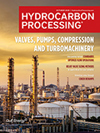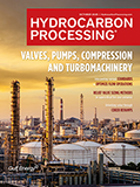Information Systems
Digital: Optimize plant turnarounds with AI-powered software
How much time and costs can be saved by scheduling with an AI-powered solution?
Executive Viewpoint : The importance of digital twins and cloud-based services
<i>Hydrocarbon Processing </i> spoke with Andrew McCloskey, Chief Technology Officer and Head of R&D at AVEVA, about how digital twins and cloud-based services are used, their benefits and challenges, security issues, etc., as related to the downstream oil and gas, refining and petrochemicals industries.
Business Trends: Are chemical companies ready for the future of work?
The COVID-19 pandemic has caused significant, short-term disruption to the chemical industry, potentially leading to long-term impacts.
Editorial Comment: The tools advancing the HPI into the digital age
The HPI has been going through a digital transformation, increasingly adopting digital technologies to improve existing processes and structures to improve performance.
Innovations
H2scan has released its latest product in the HY-OPTIMA™ line of sensors.
Safety: Do companies have the right tools to make proactive safety decisions?
A process safety management/operational risk management survey conducted by Sphera in 2020 polled respondents on the following items.
Improving asset utilization by closing the corrosion window
Driving profitable refinery operations often requires owner-operators to balance production flexibility and product optimization with asset availability and equipment reliability.
Optimize processes with a spreadsheet
Hydrocarbon processing industry (HPI)/continuous process improvement (CPI) processes are often characterized by complicated kinetics and simultaneous heat and mass transfer.
How to support condition monitoring with wireless instrumentation networks
When <i>Wireless</i>HART first hit the market in 2008, most of the native devices using it were process measurement instruments.
Executive Viewpoint: How digital transformation improves safety and reduces emissions
Digital transformation is a strategy for improving performance by applying technologies for measurement, connectivity, data storage, analytics and visualization

- Verso Energy awards FEED contract to Rely for the DEZiR eSAF project 11/17
- Iran confirms seizure of tanker with petrochemical cargo headed for Singapore 11/17
- Asian gasoline margin spikes to highest since August 2023 11/14
- Lukoil-Moldova grants free use of airport fuel terminal to government amid U.S. sanctions 11/14
- Croatia rejects Russian vacuum gasoil cargo after U.S. sanctions 11/14
- Bulgaria wins UK sanctions reprieve on refinery, petrol stations 11/14




